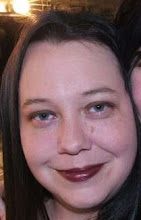
The piece I will talk about today is called "Mount Vesuvius". Earlier in the summer, I discovered a new writer, David Gibbins. His books are of the archaeology adventure variety (I love those types of books). My favorite of his books is set partially in Pompeii and Herculaneum, both of which were destroyed when Mount Vesuvius erupted in 79 AD. This book has inspired several paintings, of which is this one.
This panel was one of the black gessoed ones. (see previous post) I had just finished the book (The Lost Tomb) and knew right away that I wanted to paint an erupting Vesuvius. I decided to use a crackle paste background. I had only ever used crackle paste on canvas, and when you use it on a flexible surface like canvas or paper, you have to cover it with medium after it has been painted or run the risk of some of the pieces popping off. On a rigid substrate like my little panels, it is supposed to be more stable. Once I spread the crackle paste on with an adhesive spreader from the hardware store, I took large foam letter stamps and stamped the Roman number for "79" (the year Vesuvius erupted) along the edge, creating a deep texture in the wet paste. After the crackle paste was dry, I painted it in layers with reds and oranges and other fiery colors, using watered down washes to emphasize the texture. Then I found a nice, clear photograph of Mount Vesuvius on the internet. I resized it to fit my painting, printed it out on cardstock and carefully cut Mount Vesuvius out of the picture, leaving a paper stencil of the profile of the volcano. I placed this on the painted background and carefully spread coarse molding paste over the paper,and right over the texture of the stamped numbers, then carefully lifted the paper, leaving a perfect Mount Vesuvius made of coarse molding paste. While the paste was dry but still soft, I scratched a hint of tiny houses between the volcano and the sea. Once the textured volcano was dry, I painted it with washes of various shades of brown and I painted the sea with washes of deep purple and blue. Then, once that was dry, I used a tiny bit of black on a dry brush to pick up the texture, and smudged it with a paper towel, to give everything the look of being covered in soot. Using a little more black paint, I filled in the smoke, and last I used a bit of crimson mixed with self leveling gel to add the glossy lava.
I felt like all of the different texture mediums I used worked well on the boards. I was able to leave the crackle paste uncoated and none of the pieces ever loosened while I was working on it, not even a little (unlike using it on canvas)


No comments:
Post a Comment